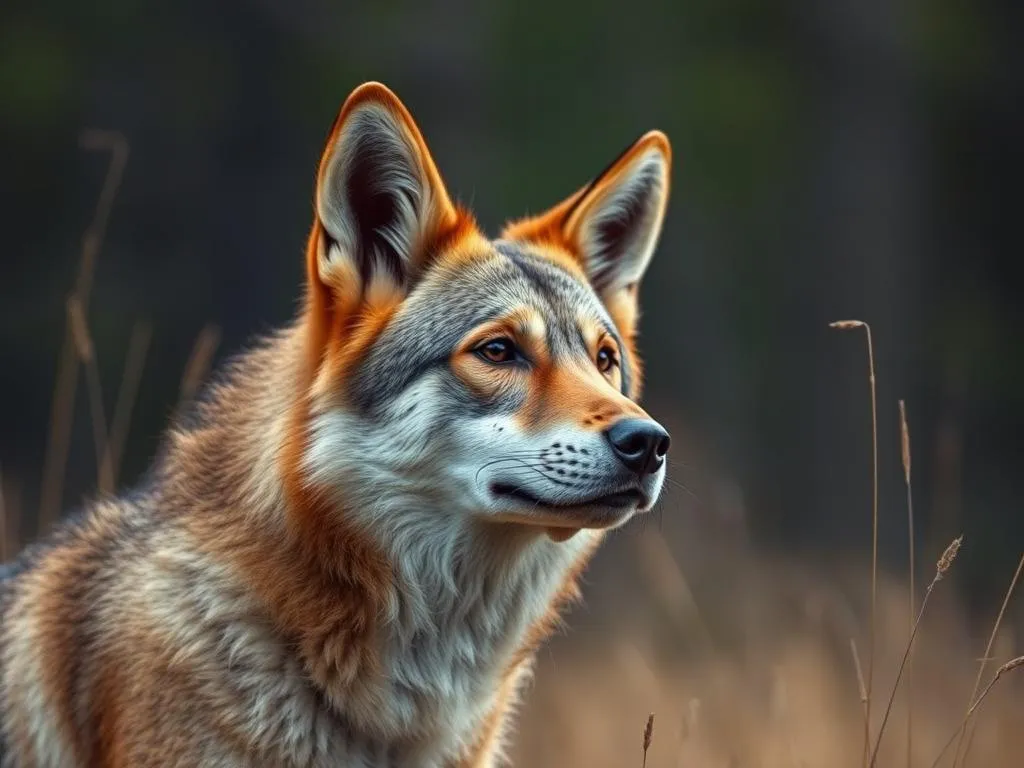
Understanding the intricacies of a dog’s sense of smell can be fascinating, especially when considering their interactions with wildlife like coyotes. Dogs, with their remarkable olfactory capabilities, often have a significantly greater sense of smell than humans. This ability not only aids them in their everyday lives but also helps them navigate their environment and respond to potential threats or opportunities, such as the scent of a coyote.
Understanding a Dog’s Sense of Smell
Anatomy of a Dog’s Nose
A dog’s nose is a marvel of biological engineering, equipped with approximately 300 million olfactory receptors, compared to a human’s meager 5 million. The anatomy of a dog’s nose allows for a complex system of scent detection. The olfactory bulb in a dog’s brain is proportionally much larger than that of humans, meaning dogs can process scents more effectively. This incredible structure enables dogs to identify various odors, including those from other animals, food, and environmental cues.
Factors Influencing Smell
Several factors can influence how well a dog can detect scents, including age, breed differences, and environmental conditions. For instance, younger dogs may have sharper senses than older dogs, whose olfactory receptors may decline with age. Furthermore, certain breeds have been specifically developed for tracking and hunting, making them more adept at scent detection.
Environmental factors such as wind, humidity, and terrain also play a significant role. Wind can carry scents over long distances, while humidity can help scents linger longer in the air. Conversely, dry conditions may dissipate scents more quickly, affecting a dog’s ability to detect them.
How Far Can Dogs Smell?
General Scent Detection Range
On average, dogs can detect scents from a distance of up to 5 miles under optimal conditions, although this can vary widely based on several factors. When it comes to various scents, some dogs can pick up specific odors even from a distance of several hundred meters. Factors such as the type of scent, its concentration, and the prevailing weather conditions all influence how far away a dog can smell something.
Specific Case: Coyote Scent
When it comes to coyote scent, dogs can typically detect it from up to a mile away, although this distance can vary based on the breed and training of the dog. For example, breeds like Bloodhounds and German Shepherds, known for their exceptional tracking abilities, may detect coyote scents from even further distances. The variability in detection distance underscores the incredible diversity within dog breeds and their respective capabilities.
Why Do Dogs Smell Coyotes?
Instinctual Behavior
The behavior of dogs when they smell coyotes is often rooted in their instincts. Historically, domestic dogs share a common ancestor with coyotes, which means they carry certain instinctual behaviors related to hunting and territorial awareness. This instinctual behavior can prompt a dog to track the scent of a coyote, driven by curiosity or a natural inclination to hunt.
Behavioral Responses
When dogs detect coyote scents, they may exhibit various responses. Common signs include heightened alertness, increased sniffing, and even barking. Some dogs might try to follow the scent trail, while others may simply alert their owners to the presence of the coyote. Understanding these behaviors can help owners better manage their dogs in environments where coyotes are present.
Implications for Pet Owners
Safety Concerns
As much as the idea of dogs detecting coyotes is fascinating, it’s essential for pet owners to be aware of the safety concerns that come with it. Coyotes, while often shy and avoiding human interaction, can pose risks to domestic pets, particularly smaller dogs. Encounters can lead to injuries or worse, which is why it’s crucial for owners to take preventive measures.
To keep dogs safe, owners should avoid walking their pets in areas known for high coyote populations, especially during dawn or dusk when coyotes are most active. Keeping dogs leashed in these areas and ensuring they are trained to respond to commands can significantly reduce the risk of an encounter.
Training and Awareness
Training dogs to respond appropriately to coyote scents can help mitigate risks. Owners can teach their dogs commands like “leave it” or “come” to redirect their attention when they detect wildlife scents. Consistent training and positive reinforcement play a vital role in ensuring dogs respond appropriately in such situations.
Moreover, pet owners should remain vigilant during outdoor activities. Supervision is essential, especially in areas where coyotes are known to roam. Recognizing the signs that a dog has detected a coyote can help owners take appropriate action swiftly.
Coyote Behavior and Habitat
Understanding Coyotes
To understand the relationship between dogs and coyotes, it’s important to consider coyote behavior. Coyotes are highly adaptable creatures, often found in a variety of habitats, including forests, grasslands, and urban areas. They have a complex social structure, typically living in family groups. Coyotes play an important role in the ecosystem as they help control populations of rodents and other small animals.
Coyote Habitat in Urban Areas
Coyotes have increasingly adapted to urban settings, often venturing into suburban neighborhoods in search of food. This adaptation has significant implications for domestic pets, as coyotes may see smaller animals as potential prey. In urban areas, the overlap between coyote territories and residential neighborhoods can lead to encounters with pets.
Pet owners should be aware of this reality and consider the presence of coyotes when choosing where to walk their dogs. Understanding coyote behavior and their dietary habits can help owners make informed decisions about their pets’ safety.
Conclusion
Exploring how far away dogs can smell coyotes reveals the remarkable capabilities of canine olfaction and the instinctual behaviors that guide their interactions with wildlife. The average distance that dogs can detect a coyote’s scent—up to a mile—illustrates just how finely tuned their senses are. This understanding is crucial for pet owners, who must navigate the potential risks associated with coyotes while also appreciating the natural instincts of their dogs.
By staying informed about coyote behavior and implementing safety measures, pet owners can foster a safe and enjoyable environment for their dogs while coexisting with wildlife.
FAQs
How can I tell if my dog has detected a coyote?
You may notice your dog becoming alert, sniffing intently, or even barking. They may also attempt to follow a scent trail or show signs of restlessness.
What should I do if I see a coyote while walking my dog?
If you encounter a coyote, it’s best to keep your dog close and calmly walk away from the area. Ensure your dog is on a leash and avoid any sudden movements that might provoke the coyote.
Can dogs be trained to avoid coyotes?
Yes, dogs can be trained to respond to commands that prompt them to avoid chasing after wildlife. Using commands like “leave it” can help redirect their attention.
Are there certain breeds that are better at detecting coyotes?
Breeds developed for tracking and hunting, such as Bloodhounds, Beagles, and German Shepherds, tend to have a heightened ability to detect scents, including those of coyotes.









